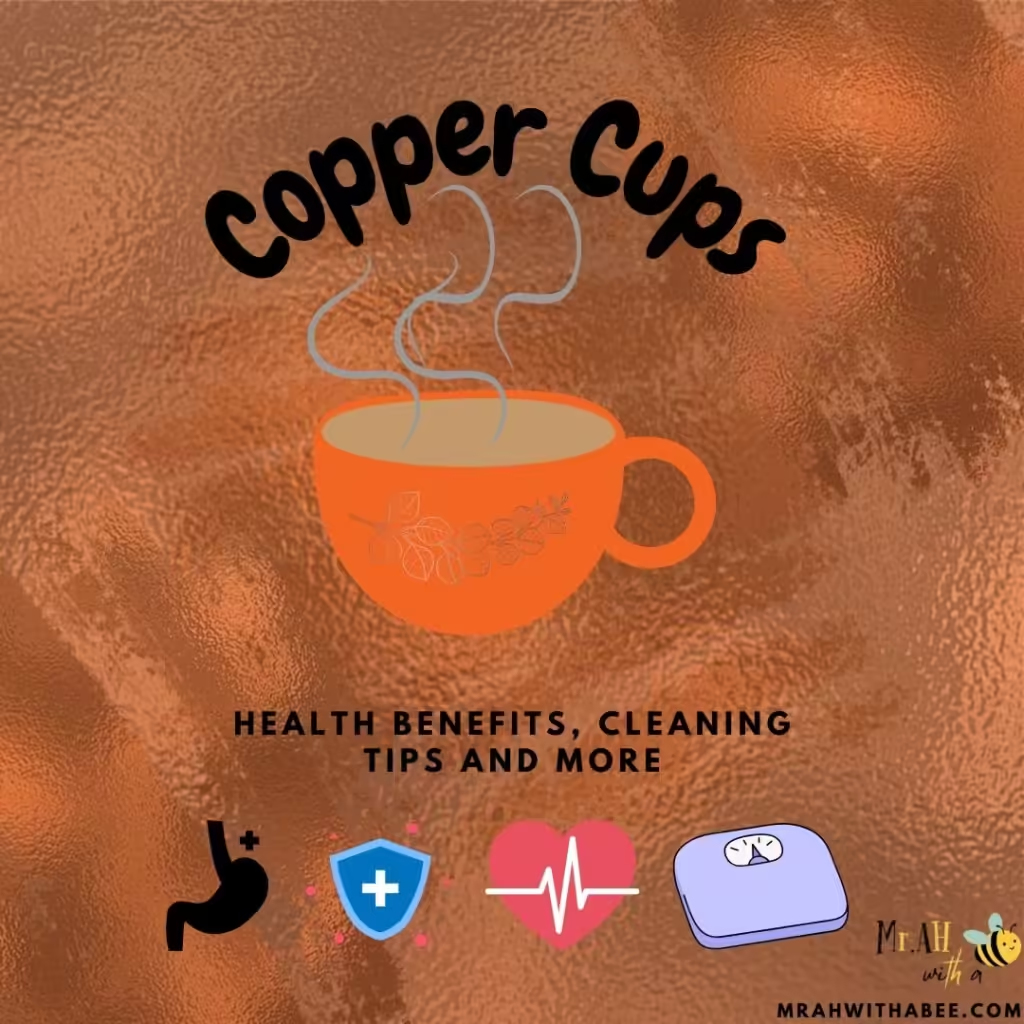As these classic drinking vessels experience a resurgence in popularity around the globe, it’s the perfect time to explore the numerous uses and benefits of copper cups that you might not be aware of. Copper cups are not only aesthetically pleasing, adding a touch of elegance to any beverage, but they also offer practical advantages. They are known for their excellent thermal conductivity, which means they can keep drinks colder for longer, enhancing your overall drinking experience.
Moreover, copper has natural antimicrobial properties, making these cups a hygienic choice for serving beverages. Additionally, many people believe that drinking from copper vessels can provide health benefits, such as improved digestion and enhanced immunity. With their rich history and numerous advantages, copper cups are worth considering for your next gathering or personal use. Discover what you might be missing out on by integrating these timeless vessels into your drinkware collection!
History of Copper Cups
For thousands of years, copper has been a valued material for carrying and drinking liquids. Ayurvedic practitioners in India and ancient Irish societies utilized copper vessels, with their use dating back to the Mesopotamian era. The earliest evidence comes from the Sumerians, who first used copper for cooking utensils, along with weapons like spearheads and arrows. Many copper pots, glasses, and trays from this period can be found in museums.
In Egypt, copperware began around 2700 BC, initially for water pipelines and sewage systems before expanding to cooking vessels. Egyptian tombs reveal the significance of copper, which included utensils like ladles, knives, and pots. By 3000 BC, copper cookware had gained popularity across Eastern countries, including China, India, and Turkey.
What Are Copper Cups?
Copper cups are usually crafted from pure copper or copper-lined materials, deeply rooted in cultural traditions and historically used by ancient civilizations for their perceived health benefits and appealing aesthetics. Authentic 100% copper cups are made from solid sheets, unlike ordinary mugs that are just coated.
Creating copper cups starts with melting discarded copper items into sheets for crafting. Once these molten copper sheets are produced, it becomes relatively straightforward to cut out circles of the appropriate size for mugs. The copper is reheated to allow craftsmen to bend and shape each circle into the desired mug depth.
After the body of the cup is formed, handles are welded onto the mugs, completing the construction. Finally, each vessel is polished and buffed to achieve a beautiful, shiny finish. This meticulous crafting process ensures that each copper cup is not only functional but also a work of art, steeped in history and tradition.
Are Copper Cups Safe?
Copper mugs are safe for drinking, and most are lined with a different material that eliminates any concerns about copper exposure and toxicity. Even with unlined mugs, copper poisoning is only a risk if there is significant exposure to copper. It’s highly unlikely that drinking from a copper mug will expose someone to harmful levels of copper..
Health risks of using lined and unlined copper cups
Using copper utensils for cooking and serving can pose health risks mainly due to metal leaching. Both lined and unlined copper cookware can release harmful metals into food, particularly under certain conditions such as high temperatures and acidic environments.
Leaching of Toxic Metals
- Copper and Tin Leaching: Unlined copper cookware can leach copper into food, while tin-lined copper pots may release tin and other metals, especially in acidic conditions. Studies indicate that acidic food simulants significantly increase metal migration from these utensils (Banavi et al., 2020).
- Contaminants: Research has shown that copper cookware can be contaminated with lead, cadmium, and nickel, which pose serious health risks when ingested (Sultan et al., 2023).
Health Implications
- Acute and Chronic Toxicity: Excessive copper intake can lead to acute toxicity, resulting in gastrointestinal distress, while chronic exposure may cause liver damage, anemia, and neurological issues (Karim, 2018).
-
Public Health Concerns: The leaching of metals from cookware is a growing public health concern, particularly in developing countries where lower-quality utensils are prevalent (Sultan et al., 2023).
What led Iowa to Prohibit Unlined Copper Mugs?
Iowa banned unlined copper mugs following recommendations from the FDA. The FDA states that copper can leach from an unlined copper mug into foods and beverages with a pH lower than 6. Therefore, the FDA advises that establishments should prevent copper from coming into contact with items at that acidity level.
The main question arises, let’s see
How is Copper Cup safe to use then?
Copper mugs are generally safe for use, especially when they are lined with another material, such as stainless steel or nickel, which prevents direct contact with copper. Copper-nickel cladding on stainless steel combines the antimicrobial benefits of copper with the durability of stainless steel, potentially offering a safer alternative for cookware or utensils. This lining eliminates concerns about copper exposure and toxicity.
When using unlined copper mugs, it’s important to note that copper poisoning is unlikely to occur unless there is significant and prolonged exposure to copper. Typically, the small amounts of copper that might leach into beverages are not harmful for occasional use.
To ensure safety, it’s advisable to avoid using copper mugs for acidic drinks, such as citrus juices or vinegar-based cocktails, as these can increase copper leaching. Additionally, proper care and cleaning of the mugs can help maintain their safety and appearance.
Benefits of Using Copper Cups
Health Benefits
Copper is renowned for its natural antimicrobial properties, which can help eliminate harmful bacteria. Copper exhibits significant antibacterial activity, particularly against pathogens like E. coli, making it a favorable choice for food safety (Nurhayani & Korda, 2015). Ancient practices suggest that drinking from copper vessels may also support hydration and improve digestion. These potential health benefits have been recognized for centuries, making copper an appealing choice for those looking to enhance their well-being through traditional methods.
Aesthetic Appeal
Copper’s warm color and natural patina add an elegant touch to any drink. This aesthetic quality enhances the presentation of beverages, making them more visually appealing whether served at a casual gathering or a formal event.
Temperature Retention
Copper is an excellent conductor of temperature, exhibiting a high thermal conductivity, approximately 400 W/m·K. Which means it can effectively maintain the temperature of your drinks for extended periods. Whether keeping cocktails chilled or hot beverages warm, copper mugs are ideal for a variety of drinks. This quality not only improves the drinking experience but also adds a sense of luxury to your beverage service.
- When you pour a hot beverage into a copper mug, the copper quickly absorbs the heat from the liquid. Conversely, when you place a cold drink inside, the copper helps maintain that cold temperature by quickly conducting heat away.
- While copper conducts heat well, it also has a relatively low thermal mass compared to other materials. This means it doesn’t retain heat for long periods but rather facilitates the transfer of heat. As a result, a copper mug can keep cold drinks cold and hot drinks hot for a longer time than many other materials, like glass or ceramic, which do not conduct heat as efficiently.
Common Uses for Copper Cups
Copper cups have become a favored choice for serving cocktails, thanks in part to their ability to enhance the drinking experience. Their unique thermal properties help keep beverages cold. Copper’s striking appearance adds sophistication to drinks, making it stylish for both casual and formal events.
Beyond cocktails, you can use copper cups for a variety of other beverages, including refreshing water and fruity juices. Their aesthetic appeal makes them an attractive choice for serving drinks at parties, barbecues, or everyday meals, elevating the overall presentation.
In addition to their functionality as drinkware, copper cups can also serve decorative purposes. Many people incorporate them into their home décor as eye-catching accent pieces or use them as small serving dishes for snacks, appetizers, or desserts. The warm glow of copper complements various styles and settings, making these cups a charming addition to any table or countertop. Overall, copper cups are not just practical; they also bring an element of elegance and style to any occasion.
How to Clean Copper Cups
Daily Care
Keep copper cups in great shape by washing them with mild soap, and warm water, and drying them immediately. It’s important to avoid using harsh chemicals or abrasive cleaners, as these can damage the copper finish and diminish its natural luster.
Deep Cleaning Methods
For deep cleaning tarnish, try natural solutions like vinegar and salt or lemon juice. Apply the solution gently with a soft cloth, rubbing in circular motions to restore the cup’s shine without scratching the surface. This method is not only effective but also safe for the environment.
Maintenance Tips
To maintain the beautiful appearance of your copper cups, polish them occasionally using a copper cleaner or a homemade solution. Regular polishing helps prevent tarnishing and keeps the cups looking vibrant. Additionally, store your copper cups in a dry place, away from humidity, to further reduce the risk of tarnish. By following these simple care tips, you can ensure that your copper cups remain a stunning addition to your drinkware collection for years to come.
Safety Considerations for Copper Cups
Copper can react with acidic beverages, which may lead to the leaching of copper into the drink. To avoid this issue, it’s advisable to use lined copper cups for serving drinks that contain citrus juices or vinegar. Lined cups, made from stainless steel or nickel, prevent reactions while showcasing copper’s beauty.
Using lined copper cups not only enhances safety but also increases versatility. These cups are versatile for beverages, from citrus-infused cocktails to vinegar-based drinks. Enjoy your favorite drinks worry-free with lined copper cups, perfect for both casual and elegant gatherings. By opting for lined cups, you can appreciate the beauty of copper while ensuring a safe and enjoyable drinking experience.
Conclusion
Copper cups offer a unique blend of aesthetic appeal and functional benefits, making them a popular choice for serving a variety of beverages, from classic cocktails to refreshing juices. While copper’s antimicrobial properties and thermal conductivity enhance drinks, safety is key with acidic beverages. Lined copper cups offer peace of mind and versatility, letting you enjoy copper’s beauty safely. With proper care, these timeless vessels can enhance your drinkware collection for years to come. Embrace the charm of copper cups and savor your favorite beverages in style!
FAQs
- What are copper cups made of?
Usually, they’re made of pure copper or copper-lined material. - Why do people drink from copper cups?
For health benefits, temperature retention, and aesthetic appeal. - Are there health benefits to drinking from copper?
Copper boasts antimicrobial properties and is believed to aid digestion. - Why are beverages served in copper cups?
Copper enhances the drink’s flavor and keeps it cold longer. - How should I clean my copper cup?
Wash with mild soap, avoid harsh chemicals, and dry immediately. - What if my copper cup tarnishes?
Use vinegar or lemon juice with salt to remove tarnish. - Can I use copper cups for hot drinks?
Yes, but be cautious as copper conducts heat quickly. - Is it safe to drink acidic beverages from copper cups?
Lined copper cups are safer for acidic drinks. - How do I prevent my copper cup from tarnishing?
Store in a dry place and polish occasionally. - Are copper cups dishwasher safe?
No, handwashing is recommended to maintain their finish.
Thanks for reading, for more interesting articles, visit our homepage.



